Dissidia Final Fantasy NT (PlayStation 4) Review
By Az Elias  07.03.2018
07.03.2018
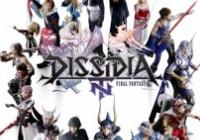
There is nothing quite like a fan service fighting game, bringing the casts of various titles and franchises into one violent party. Nintendo itself has found out firsthand how popular such a game can be, with the Super Smash Bros. series seen as the sole reason to own a Nintendo console for many, with a dramatically increased roster in each iteration never failing to get the hype levels rising. Dissidia Final Fantasy was Square Enix's attempt at something similar, but kept light RPG mechanics intact to still ensure it had that familiar hark back to the main series it spins off from. Although the sequel, Duodecim, did little to stray too far from what the original had established, it nonetheless satisfied the niche crowd that was overjoyed at the host of fan favourite characters battling it out in one place. Team Ninja was handed the task of reviving the series, and chose to focus on turning it into a multiplayer arcade fighter, which has seen success in Japan, having built up a solid fan base since its 2015 launch. At last, as promised, it has received its PlayStation 4 port, under its new guise of Dissidia Final Fantasy NT.
This so-called "New Tale" and third entry in the Dissidia mini-series is a huge departure from the PSP titles that came before it. In what looks painfully obvious like an attempt by Square Enix to try to capture that "esports" crowd following the steady increase of interest in competitive video games in the last few years, Dissidia Final Fantasy NT strips back a lot of what made the original two games major time killers. The biggest change is that battles have gone from 1v1 to 3v3, with the entire game built around this team-based system. It is still possible to fight 1v1, or even 2v2, through custom online matches or in a sparring mode against the AI, but the focus is most definitely on the three-man team experience, which is what all other modes and online matches revolve around.
With the competitive tournament philosophy in mind, the fighting system needs to be balanced as much as possible, and the result is the removal of any kind of character customisation that affects stats and the vast majority of moves. Therefore, there are no equipment or accessories to place onto combatants, and move sets cannot be altered, except for choosing which one of four HP attacks are ran with before a match begins (Vaan is an exception, with six to choose from, and he can use two in battle). One of the main appeals of the previous titles is absent in Dissidia FFNT, so as to ensure players that grind for equipment don't hold an unfair advantage over others; instead, matches are won through the individual's skills in the moment.
Apart from feeling like a grind to eventually get enough Memoria to finish the story, the battles can be extremely difficult at times due to having to rely on your incompetent AI partners. The only way to ensure progress is to level up the offline rank of the AI characters you are forced into using on certain paths, and through unlocking boosters that help make things easier.
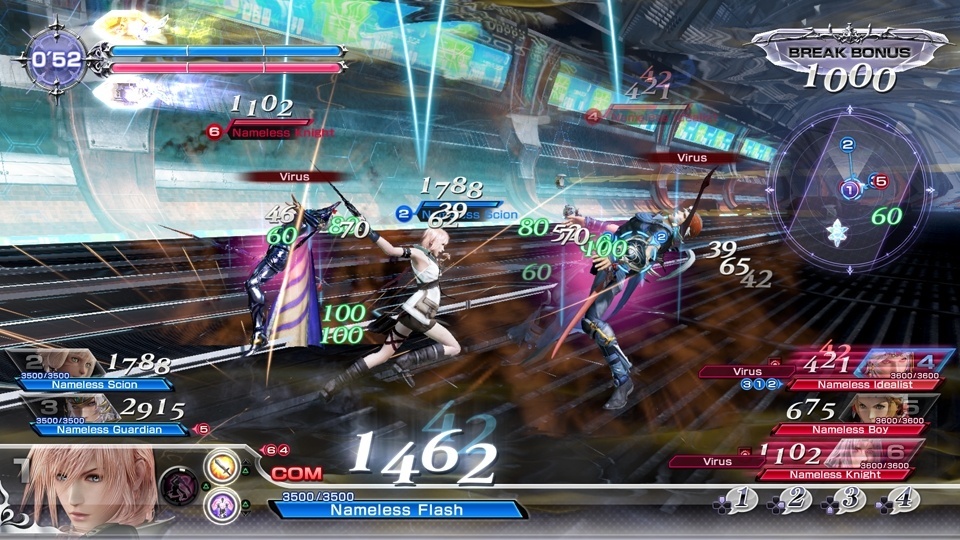
There are several summon battles to partake in, which function very differently to standard character battles, but these will leave a nasty shock upon the first time battling them. While a couple are pretty easy to defeat, others, like Ramuh, Alexander and Shiva, can prove extremely tough, especially when you can only choose between certain characters, and will almost certainly need to level them up in other modes first. Summon battles require patience and learning their moves in order to beat them, but once you suss each one out, they end up pretty enjoyable. Some characters have a much easier time of it, even if the fights can seem like an impossibility at first.
The plot itself is not explained properly, with the reason for the summon fights not being entirely clear or holding much point, and some characters don't get any screen time at all or just appear at the end for a cameo. Of course, fan service games don't need a good story that makes sense, but the narrative here is half-baked, where a proper ending scene couldn't even be bothered to be made, resorting to credits and still images straight after the final battle.
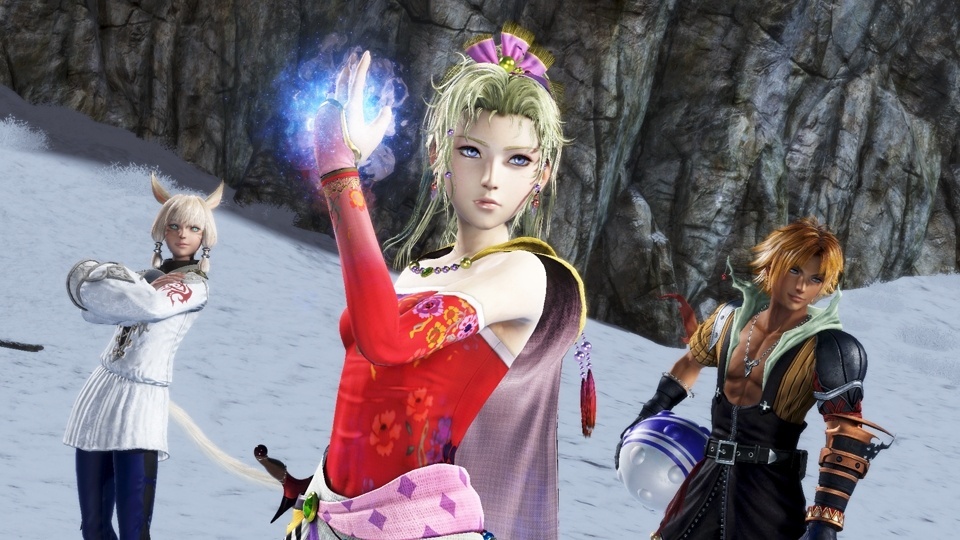
Credit where it is due, however; there are actually some very redeeming moments in a few of the scenes for a handful of characters. The first two Dissidias focused on the most unappealing aspects of some of the fighters, but DFFNT brings their qualities to the forefront, allowing characters like Terra to shine. The Final Fantasy VI heroine is finally done justice, where her few cut-scenes, pre- and post-match quotes, and user-activated dialogue commands do more than any other game she has appeared in before to showcase her as a strong leader that is able to take charge of the situation. Cloud doesn't mope about and lament his past any more, Lightning reveals her motherly side, and even Kuja's modesty is highlighted.
These personality improvements and interactions between various characters make the cut-scenes a joy to watch, which only makes it all the more disappointing that there aren't enough of them and that the story jumps about without much context. Not all characters are perfect, though. Cloud can still sound a little moody, Squall's voice is way too mature and grisly for a teenager, Ramza sounds just plain awful, and many quotes from the previously non-voice acted games of the past are now spoken aloud in peculiar ways.
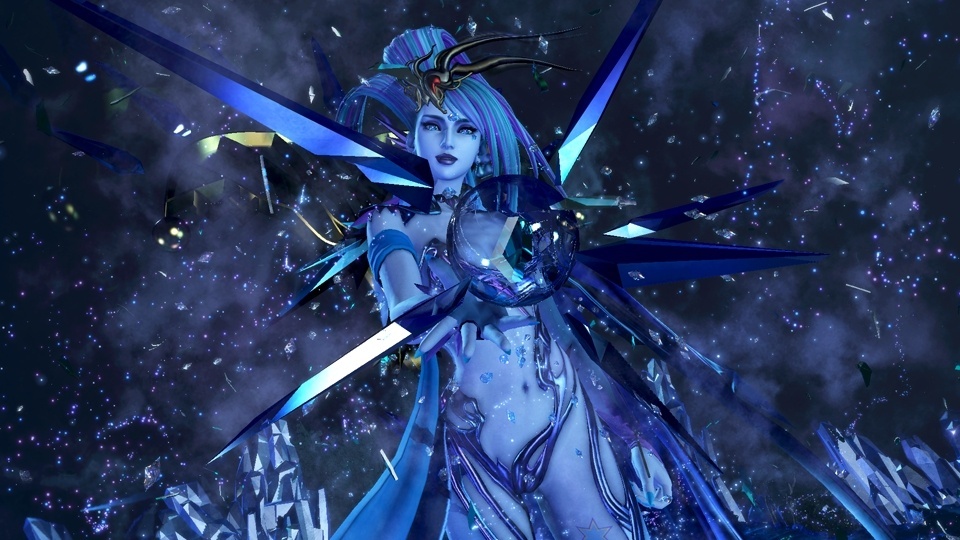
This is all pretty unimportant when it comes down to what Dissidia Final Fantasy NT is all about, though: the 3v3 battles. Outside of the story mode that was crafted specifically for the PS4 port, perhaps the biggest problem with this game is its complete lack of modes. The online experience is the absolute central focus, where players can participate in solo ranked, party ranked, and custom lobby matches. Offline is the issue, with just the Gauntlet Mode (which acts as somewhat of an arcade mode replacement) and a sparring mode being the only two options available. Apart from attempting to reach target scores by the end of the available trials in the Gauntlet, there isn't much to challenge for and unlock. The rewards are pretty small: some gil or titles, mostly.
Core Battles are available alongside the standard matches, which sees both teams battling to destroy the other team's crystal. This is actually a mode many will be replaying a lot, as it rewards with a chunky amount of gil and can be abused and easily won by using ranged characters that can destroy the core from a distance.
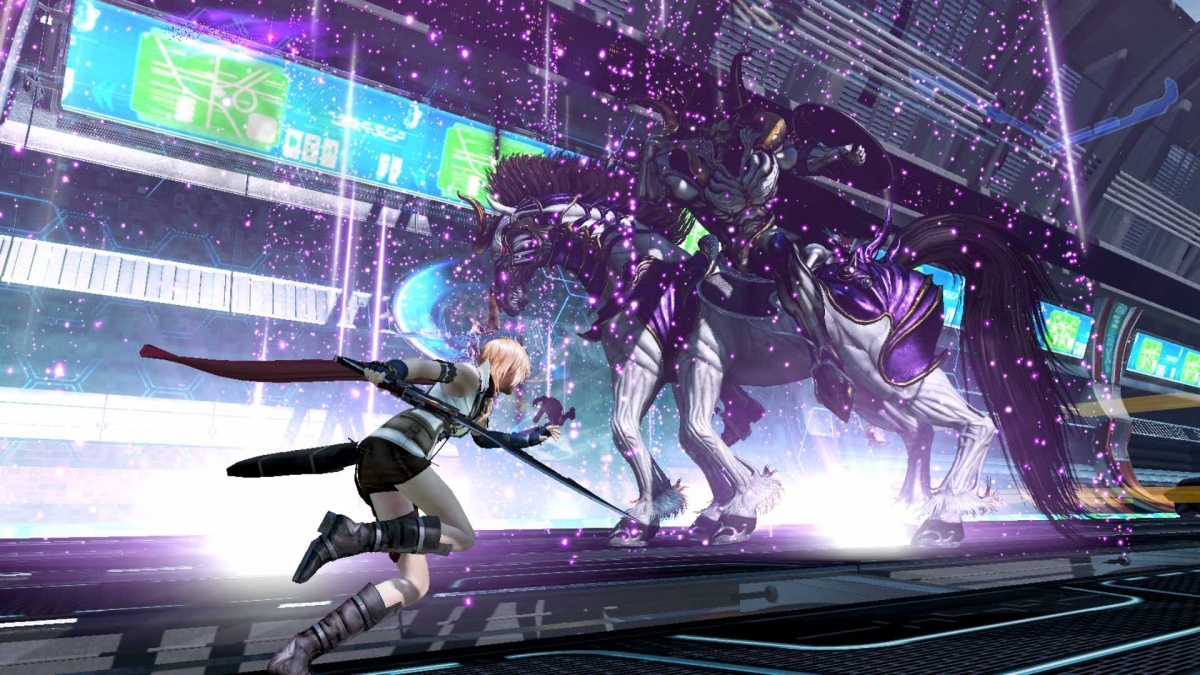
There does, however, seem to be a glaring oversight in the design of the Gauntlet. Over time, AI characters will level up, getting better as partners on your team. Eventually, they will reach such a level that the ally COM characters themselves will become powerful teammates, causing all sorts of havoc on the battlefield and defeating opponents easily. This can prove really problematic when attempting to control the battles yourself in order to gain as many points as possible to unlock certain rewards by the very end. In effect, you almost have to contest with your own party members, as the AI may be defeating enemies you want to get the kills for and may end the matches too early. Such is the design of the battles, the longer matches go on, the better chance of gaining more points. Actually finishing a match early isn't always the best way to go, particularly if you aren't the one getting the kills.
By extent, if you want the greatest chance of reaching the top scores in each Gauntlet trial, you need to keep your AI teammates at a balanced enough level that they don't take over the match, but are still good enough so as to handle themselves without getting defeated. It's still possible to do with highly-levelled COM characters, but it can be an even greater challenge than it needs to be. A good solution may have been to allow players to alter the levels of their AI partners.
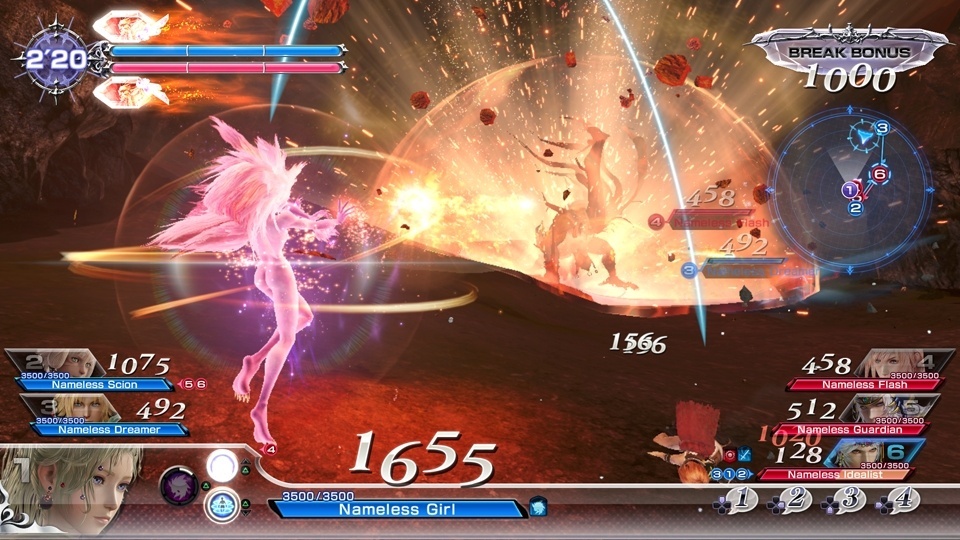
Dissidia Final Fantasy NT is a complex game that requires players to invest serious time in order to get the most out of it. Whilst there is a tutorial that goes over the basics of how to play, it is very bare bones. Perhaps most incredible of all is that since each character plays vastly different to each other, you would expect at least some basic move lists or command training to show what each fighter can do. There is none of this.
Lightning is an example of someone that has unique skills and can switch between two different play styles at will. Whilst it is mentioned in her small bio on the character select screen that she can do this, there is no explanation at all as to how. You actually press L3 at any time during a match - and whilst that sounds simple and becomes second nature before long, the fact such an important command is not even mentioned how to be used is strange, especially because L3 isn't used normally for anything else in the game.
Square Enix has been pushing players to use the official website for a full list of character moves, but it is crazy that this isn't accessible from an in-game menu, even just as a list, never mind as individual character tutorials or command training.
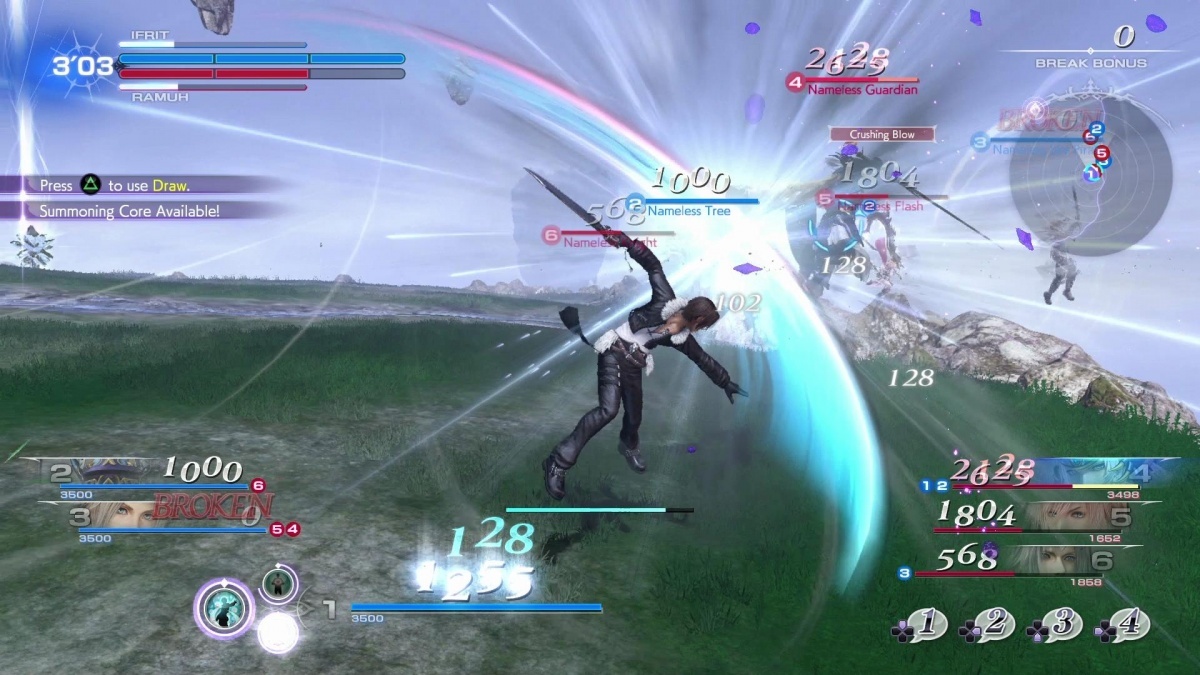
As touched upon above, each character - fantastically crafted, as expected of the Team Ninja designers - is incredibly unique in their play style. Split up into four general types, there is a fighter for everyone. Vanguards are the slightly slower heavy hitters, Marksmen are the ranged shooters that can pick off foes from afar, and Assassins are the agile combatants that close in quickly. At the most basic level, this is a triangle-like system, where Vanguards fair better when taking on Marksmen, Marksmen handle the Assassins well, whilst Assassins are too good for the Vanguards. However, that's more of a rough template, so if you have the knowledge and skill, and by using the full range of tools at each character's disposal, any fighter can take out another. Specialists are the final class - outliers that have distinctive moves setting them apart from the rest of the pack.
It has to be said, though, that the overall roster is underwhelming. By continuing to run with the heroes versus villains concept, the development team has limited itself in exactly who it can put into the starting line-up until the DLC characters enter the fray this year. 28 fighters is a respectably solid number for a fighting game, but the vast majority are all faces seen before in the past two titles. Y'shtola, Noctis, Ramza and Ace are the only Dissidia debutants, whilst there are just six females in total. Given the emphasis in the story isn't necessarily good against evil, it really wouldn't have been a big deal to skip over some of the less popular villains in place of protagonists that fans are more familiar with. It is exciting to see who will be part of the season pass content, but early purchasers deserved a more diverse roster.
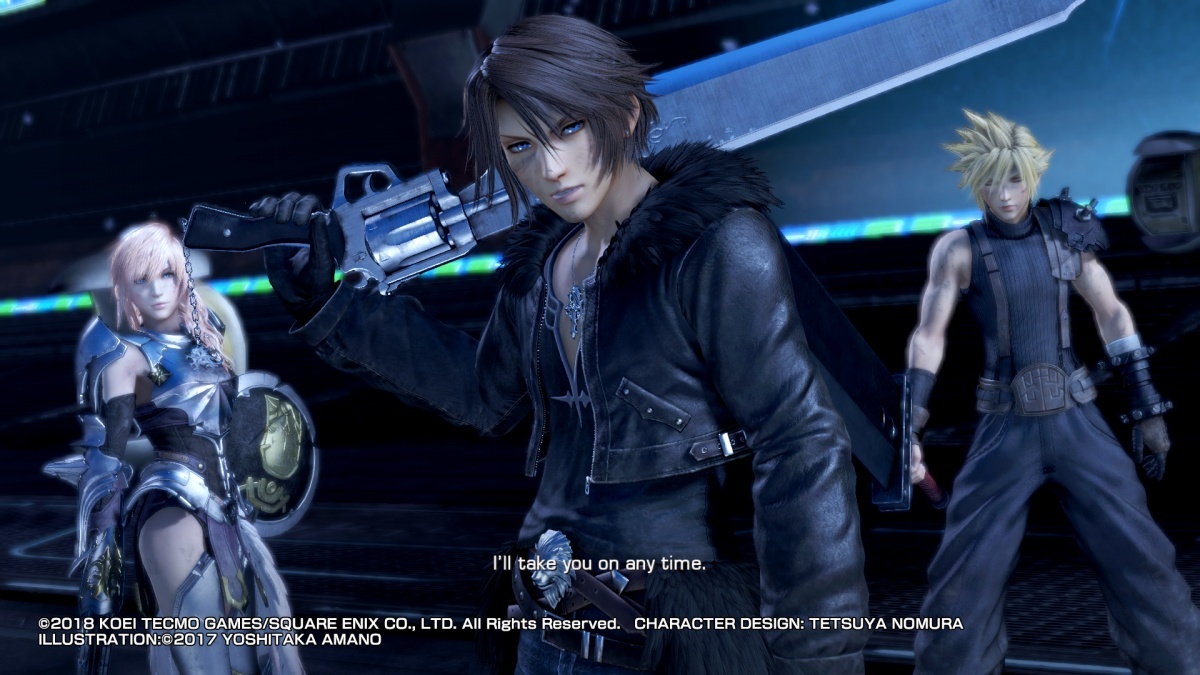
That big difference from the previous titles, then… As a 3v3 team-based 3D arena fighting game, DFFNT is like nothing else out there. This has been designed absolutely for team play with other human players, so the online battles are the core of the game. To get the maximum amount of enjoyment out of it, you have to accept and understand how it is supposed to be played. Whilst there isn't necessarily a right or wrong answer, as Lightning herself says: "If you don't work as a team, you're nothing." The importance of team play cannot go emphasised enough. Many of the pre-match character intros remind again and again that you have to work as a team in order to win. This comes with difficulties of its own, though.
The same basic gameplay as the last two games returns. Use bravery attacks to rack up bravery points, then land an HP attack to take off that amount from the enemy's health bar. Matched up with two other human players when playing in solo ranked, communication is paramount, and this is exactly why there are many chat commands that can be customised to the d-pad for easy access. Things like calling for backup, telling your teammates to activate the summon, assuring that you will handle a specific opponent so your team can focus on the others… These and more are helpful commands that will inform and make life easier for your group. The problem is that if other players aren't on the same wavelength, it can sometimes mean a challenging fight.
Being matched up alongside people that don't seem to be working together can be frustrating, and losses can rack up when they aren't necessarily your fault. There is a steep learning curve here, though, so it is understandable that many players can take a while to get the hang of it.
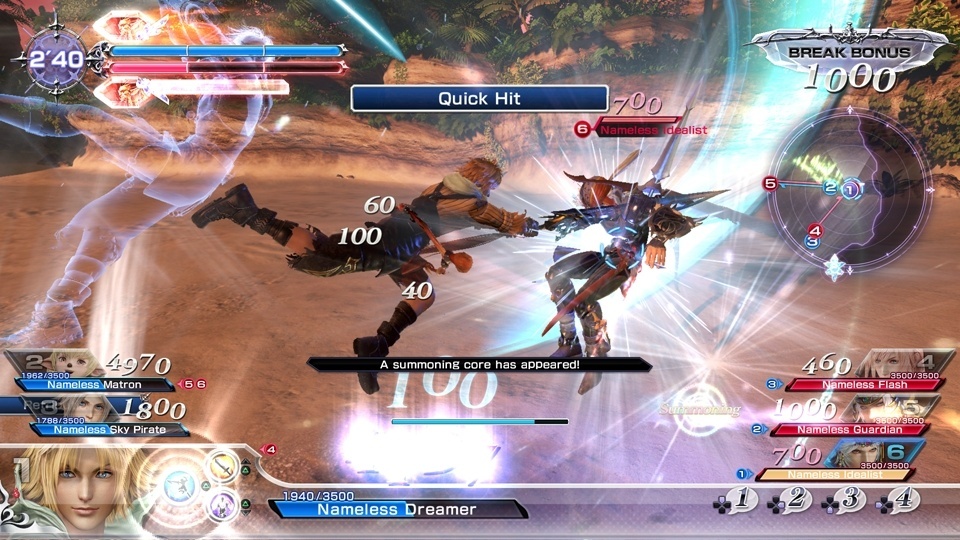
The user interface, whilst toned down and less obnoxious than the arcade version (which can still be turned on if desired), is full of information, and can look extremely overwhelming and confusing to begin with. However, a knowledgeable player will soon realise that it is all essential. Everything you need to know is there on the screen, from the HP levels of your allies and enemies, to the lines indicating who is targeting you, to the minimap showing where everyone is in the arena… To become a good Dissidia player means utilising the details on the HUD effectively.
Every character has special EX skills that grant them tailored abilities in battle, such as Cloud's Limit Break enhancing his charged attack speed and HP attacks, Terra's Trance boosting her stats and speed, Lightning's Army of One battering her foes with a flurry of attacks whilst recovering HP, and Y'shtola's Aetherial Pulse creating a huge aura that restores HP and bravery.
Although the array of customisation options of past games isn't present, there is still scope to do that with standard EX skills that buff yourself and allies or debuff enemies. A summon can be called in battle after choosing one prior to the match and smashing enough crystal cores during it, which grants help in various ways, from Ifrit's added attack power, to Leviathan's enhanced debuffs.

The level of depth may go unnoticed upon first inspection, but it is certainly there, and it is a fantastic feeling when battles flow and teams come together to produce memorable clutch moments that clinch tight victories - which is why it is such a shame that the netcode is pretty terrible.
One of the most important parts of the game due to this being an online-focused title makes DFFNT near unplayable at times. Never mind that countless matches turn into out-and-out lagfests as if everyone is fighting underwater, but there are so many pre-match connection errors, sending you right back to the main menu.
There are times where you can wait five or ten minutes even after the game says it has found enough players, and then either a disconnection will happen, or everyone will be replaced by bots. Ironically, fighting against bots online is a great opportunity to smash them and get enough points to achieve the max grade of A++. Pretty handy considering it is difficult to get this rank consistently, and there are trophies for earning that grade three times for each character.
The shop itself contains some fantastic classic and arranged music (even though many are reused remixes and much is missing from the arcade version, so will no doubt come in future updates), different costumes and weapons for cosmetic effects, special voice commands, and icons to show off your favourite character. There is a loot box-like system to spend earned treasure, which will reward with three random items, but it is almost a joke to bother with it. Given treasures become so difficult to earn the more you play, only gaining one with each level up, and then usually just being gifted icons you've got before (the cosmetics, music and voice commands are much rarer), it can often feel the opposite of rewarding when finally earning and spending a treasure.
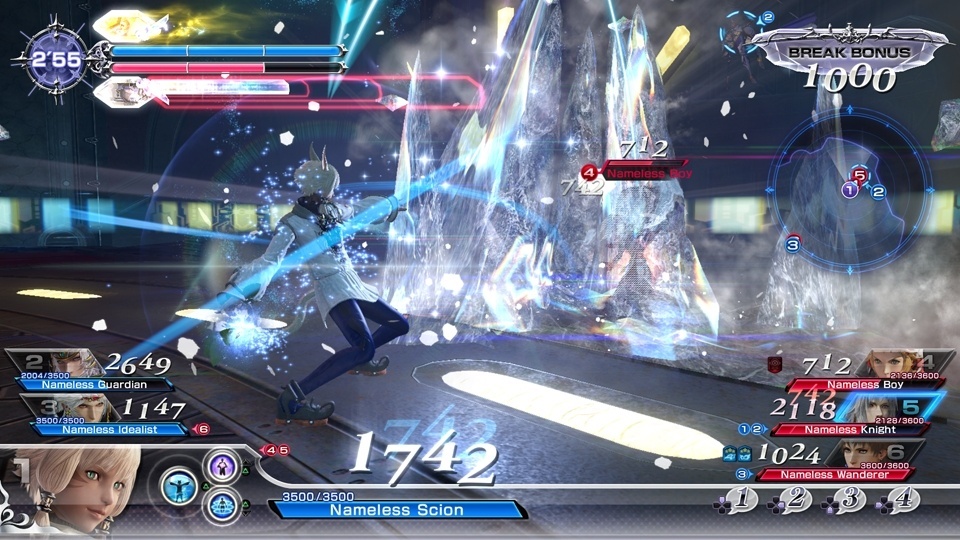
Cubed3 Rating
Good
When everything comes together, when there is no lag, and when a team works in unison to annihilate their opponents, Dissidia Final Fantasy NT is at its greatest. Unfortunately, the netcode is too unreliable, and the distinct lack of modes for offline play just isn't good enough for a game that had plenty of time before it made the transition from arcade to console. There is scope to expand this into something much more, but whether the budget and will is there remains to be seen. For one of the most original fighting games on the market, though, this is well worth dedicating some time to if you're a Final Fantasy fan.

![]() 6/10
6/10
![]() 0
(0 Votes)
0
(0 Votes)
 Out now
Out now  Out now
Out now  Out now
Out now  Out now
Out now Comments
Comments are currently disabled

 Sign In
Sign In Game Details
Game Details Subscribe to this topic
Subscribe to this topic Features
Features





 Top
Top

